As mentioned earlier, "wide resection" is traditionally defined as removing the tumor from the edge of the tumor and two to three centimeters of normal tissues. There is no firm definition of how many centimeters of normal tissues should be removed. Articles decades ago recommended that the edge should be at least 3 centimeters or more. Still, because of the great preoperative chemotherapy and accurate imaging technologies, it is generally considered that one to three centimeters of the safe range is sufficient.
Therefore, this ‘one-centimeter safe range’ allows us, orthopedic surgeons, to develop new tumor removal methods under special tumor conditions. The methods include:
1. Hemicortical resection
2. Hemicondylar resection, which is derived from hemicortical resection and retains one side of the cartilage
3. Epiphyseal preservation
Hemicortical resection and Hemicondylar resection apply to a small portion of the tumor (less than 10%) which is found relatively early and invades only half of the bone. They can be considered as a replacement for the traditional larger range of excision. (Dr. We: For example, it’s like we bought a pretty good Aiwen Mango (愛文芒果) from the market and we realized that we've bruised part of it after we went home. We might choose to cut off the bruised part and keep eating the rest for dinner.) Hemicortical resection is similar, trying to keep the normal non-tumor-invaded location to achieve the best post-surgical function recovery.)
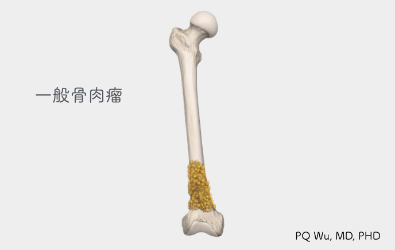
General osteosarcoma has a wider invasion range and affects the width of the entire bone
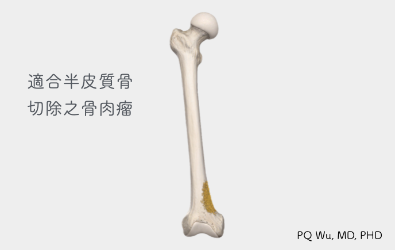
If the range of osteosarcoma invasion is smaller, which approaches only part of the width of the bone, it is suitable for hericortical resection
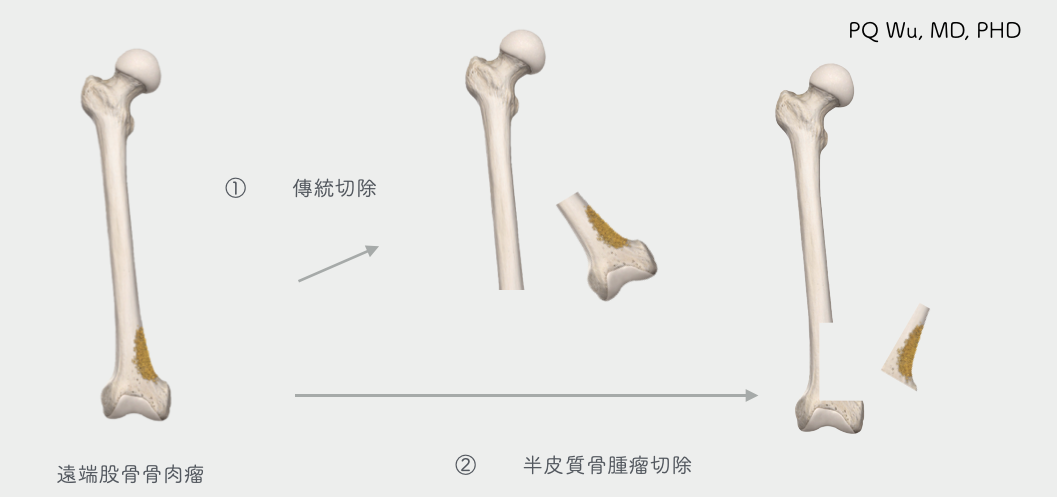
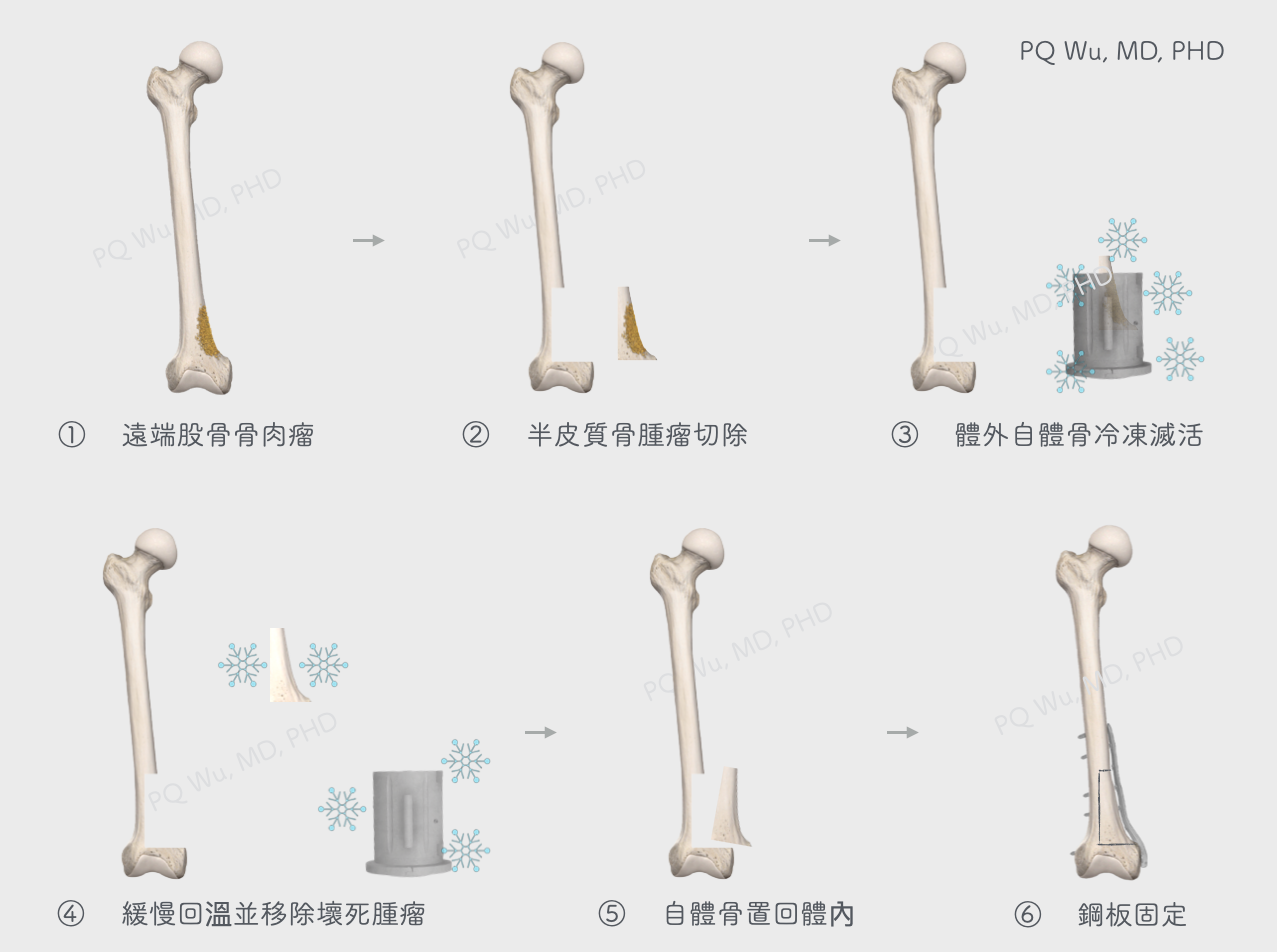
At this time, you may wonder that will it be easier to generate tumor recurrence after surgery since the excision range is small? The answer is yes, and thus we’ll need to select patients carefully. The following criteria must be met for such surgery:
1. The tumor invasion range is small, which does not exceed two-thirds of the bone range, otherwise, proper fixation cannot be made.
2. The pre-surgical MRI, DWI showed that tumors had a fairly good necrosis rate for chemotherapy.
3. Pre-surgical X-ray, MRI images have great quality.
4. Surgeons must have considerable abundant experience for osteosarcoma surgery.
For a hemicortical resection, all the above criteria must be met. Hemicortical resection is invented by Director WM Chen, Dr. Wu’s teacher, and has been applied to the surgical treatment of osteosarcoma. We published it in the well-known “Journal of Oncology" in 2012 and received quite a few responses. Countries such as Japan also started following this approach.
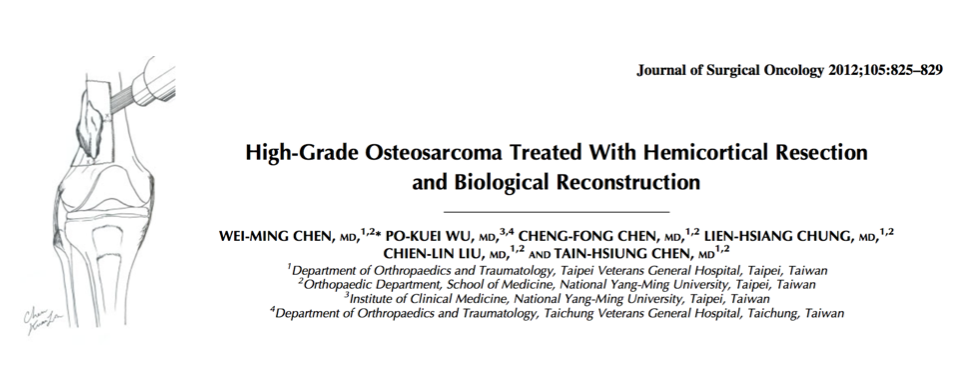
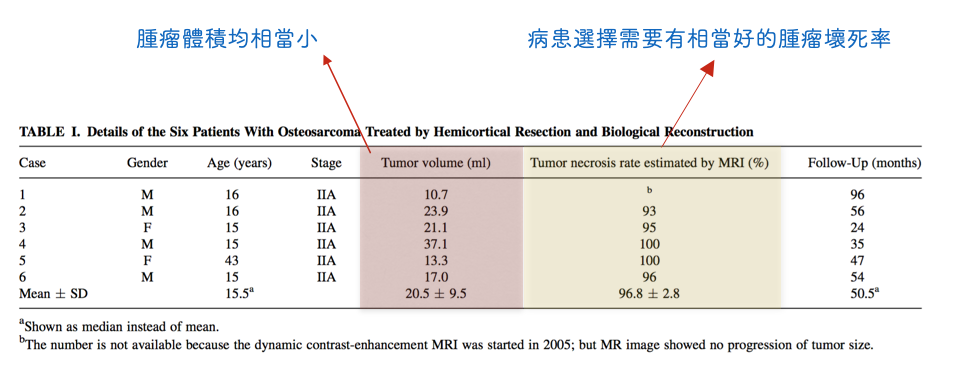
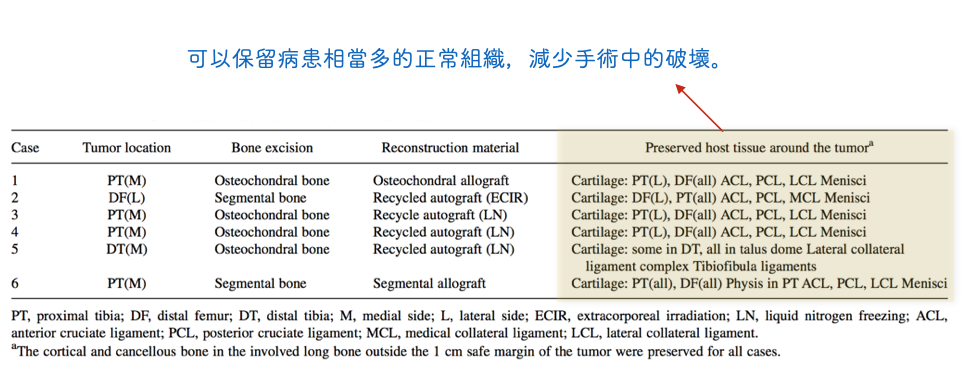
Case 1: A 20-year-old woman with malignant osteosarcoma beneath the knee bone. The tumor was removed by hemicortical resection.
The preoperative X-ray showed that the tumor range was small and only affected parts of bones. MRI also reveals that the tumor distributed in a smaller range.
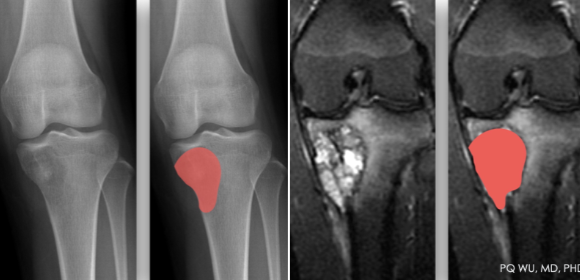
During the operation, hemicortical resection was conducted, and the outer cartilage was preserved. The tumor was wiped out under an ultra-low temperature of minus 196 degrees Celsius to obtain a clean bone. We put the bone back into the patient's body, and the frozen recycled autograft bone is completely healed with its own bone after ten months.
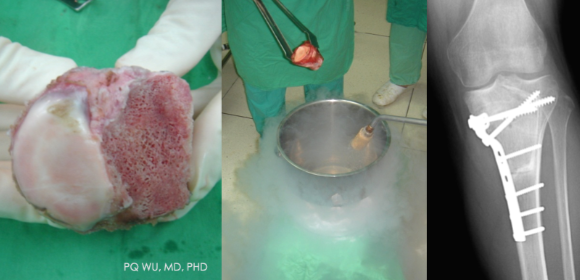
Case 2: A 20-year-old woman with malignant osteosarcoma at the ankle. The tumor was removed by hemicortical resection.
The preoperative X-ray showed that the tumor range was small and only affected parts of bones. MRI also reveals that the tumor distributed in a smaller range.
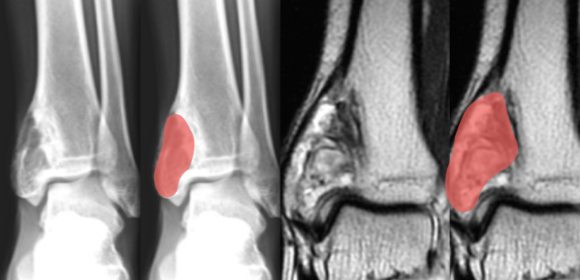
In the surgery, hemicortical resection was conducted, and the outer tibia bone and ligament were preserved. A clean bone was obtained after eliminating the tumor under an ultra-low temperature of minus 196 degrees Celsius. The bone was put back into the patient's body, and the frozen recycled autograft bone is completely healed with its own bone after ten months.
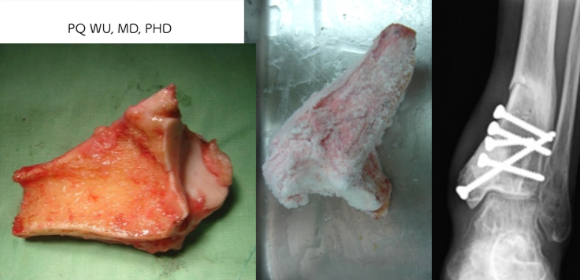
By carefully selecting tumors, hemicortical resection is a fairly good method. Patients can get almost the same recovered function as healthy feet after surgery!


